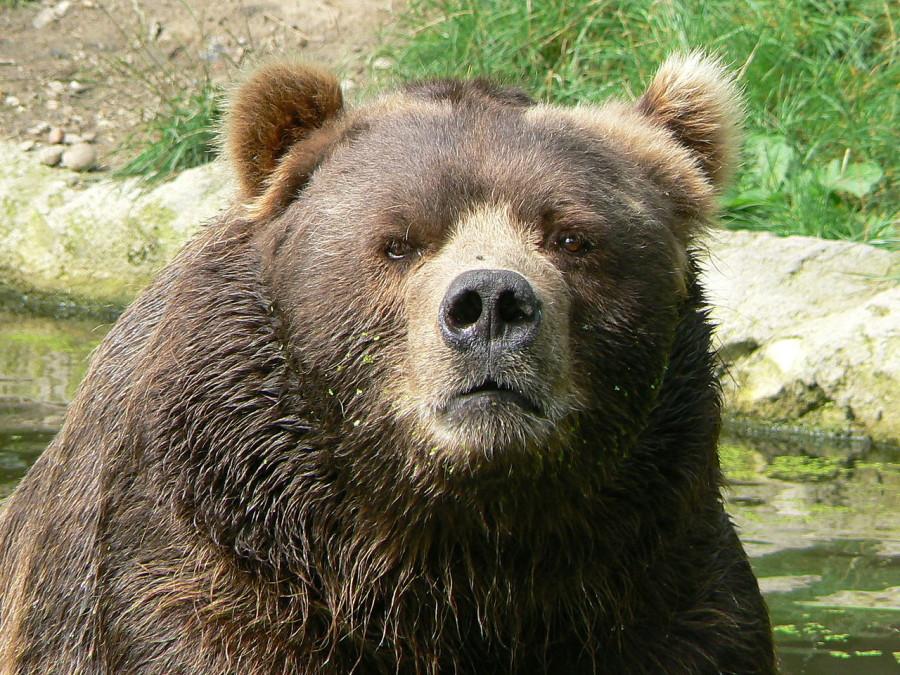You could learn a lot from a bear
People are often looking for inspiration, or answers to the question of how to live life. Though they may not be as prominent on the Internet as self-help texts or how-to guides, bears (yes, bears) provide an excellent model for how to live happily and find meaning in existence if we study them very closely. There are three main sources of knowledge that bears can give us: metaphysics, aesthetics, and Tao. By delving into each one within the context of bears, we can discover a life of sublime beauty and contentment.
The Metaphysics of Bears
The two fundamental questions in philosophy, which all other metaphysical principles are based on, are 1) What is ultimately there? and 2)What is it like? We, as well as the most pensive philosophers, spend a good deal of our lives trying to figure out our purpose here on Earth, sometimes reaching an enlightened state, or, more often than not, sitting back down and eating more chips.
Be that as it may, some creatures, such as bears, need not ponder the meaning of life at all. Is it because they choose not to; is it too much of a hassle? Is it because they have already reached an enlightened state and don’t need to trouble themselves with the petty inquiries of mere humans? Or maybe, as non-sentient beings, they just can’t?
All the same, the bear does not need to question his hunger, or his ability to satisfy it. He must simply wander into the nearest river, at his own pace of course, and wait for the salmon to jump into his mouth, no questions asked. The bear doesn’t need to know why he waited there, or why the salmon did that. The bear is just satisfied, although the salmon is probably distinctly less so.
The Aesthetics of Bears
When asked to think of something beautiful, bears won’t pop into most people’s minds. Big, round, furry—they are not exactly the epitome of elegance. Yet despite their bushy appearance, there is something ever so alluring about bears. Maybe it is their lumbering walk, how they plod through the mountains and forest ever so ungracefully, alerting all the nearby woodland creatures. Or perhaps it is their incomparable sense of fashion, wearing brown coats with black paws.
Philosophers from ancient Greece, the civilization that has influenced Western aesthetics more than any other, concluded that bodily proportions were critical in identifying beauty. Bears are not built like humans; their body is much bigger and heavier than ours, their jaws the size of our heads. Regardless, all these dimensions of their body seem to make sense.
A man with a crooked nose can still smell, but a bear with short legs wouldn’t survive two days in the wild, being unable to run or sustain itself. A bear’s body parts are perfectly complementary. If philosophers truly believe that beauty is founded on symmetry and proportions, there is no animal more beautiful than the bear.
The Tao of Bears
Tao, a Chinese concept referring to the “way” or the “path,” is one of the hardest philosophical and/or religious (depending on how you look at it) branches to explore. Tao in its simplest form, which is kind of its whole point, signifies the primordial nature of things, the fundamental essence to the universe.
With this in mind, what is more primordial than the bear? This animal, equipped with only the necessary tools to survive, walks around its habitat eating, sleeping, and entertaining itself, unconcerned with the struggles that we humans face everyday. It does what it needs to, when it needs to, and just does it.
One of the largest precepts in Taoism is that things just are; they are not good, bad, big, nor small. Similarly, the bear just is. It doesn’t see the salmon as inferior and it doesn’t see the sky as blue. It sees things as they are, and that’s why, whether it be based on beauty, or purpose in life, the bear really is the master of all creatures, of all entities, and of all that is.

Sam, also known as "Slammin' Sammy" in reference to his radical softball skills, is a writer in the Features section of The Talon. It's his first year....









